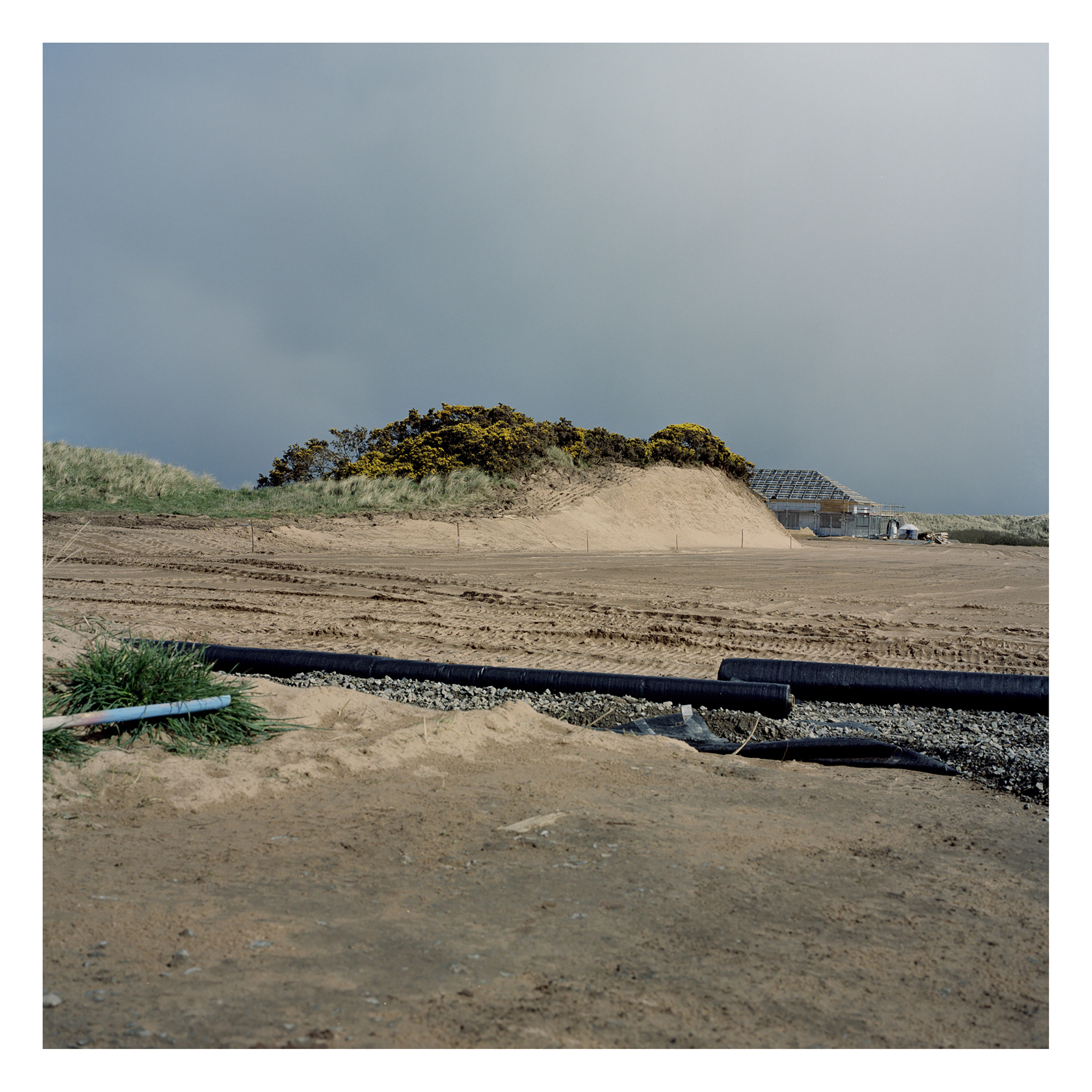
6 minute read
Alicia Bruce - I Burn But I Am Not Consumed
On The Bookshelf
Alicia Bruce I Burn But I Am Not Consumed
Reviewed by Nick Hodgson FRPS
All Images ©Alicia Bruce
I Burn But I Am Not Consumed by Alicia Bruce is published by Daylight Books.
£37.99 from beyondwords.co.uk/i-burn-but-i-am-not-consumed-signed

It’s not difficult to describe former US president Donald J Trump as a ’marmite’ personality. Clearly he still enjoys a significant following within the United States’ electorate and, at the time of writing, despite assorted legal cases being brought against him, seems on course to gain the GOP nomination for the 2024 presidential election. But mention his name to the citizens of Menie in Aberdeenshire and you will almost certainly get a uniform response: disbelief and at times outright anger about his actions which have impacted this small corner of Scotland over the past sixteen years. These actions and their impact have been meticulously documented and interpreted by awardwinning photographer Alicia Bruce in her new book I Burn But I Am Not Consumed.
“When I first heard that Trump was going to build a golf course on what was an SSSI” says campaigner Rohan Beyts, “I thought it was an April Fools”. But this was no joke. The ancient shifting sand dunes along this stretch of the Aberdeenshire coast in northeast Scotland were designated as an SSSI – a Site of Special Scientific Interest. Despite this, in Trump’s eyes they made an ideal location for a links golf course, not only adding to his collection of courses but also playing into his Scottish heritage narrative - his mother, Mary Anne MacLeod, was born on the Isle of Lewis.
The (very brief) summary is that, lured by the idea of significant economic benefits to the local area, initial support in 2006 from the Scottish Government and Aberdeenshire Council in effect gave Trump the green light to start building his golf course at Menie in 2010. It opened two years later and despite ongoing protests, construction of a second course and exclusive housing started in March this year. Maps, and a very helpful timeline in the book, give the reader in-depth details including press cuttings and extracts of planning documents, notes of failed legal challenges and dates of protests. It’s worth reading all of this information to fully understand the struggles that this community has faced, as inevitably the real story is about the impact on the local people. And as Bruce hails from this part of Scotland and understands the psyche of this community, who better than her to document their plight?

The individual stories are at times heart-breaking. Families that are rooted and have lived in the area for decades, generally minding their own business and getting on with their lives, are suddenly subject to brutal changes, aggressive legal and security tactics, polluted water supplies, unsympathetic legislators and, as it turned out, an initially conflicted local media. Throughout the book we see their proud, stoic and often understated determination to challenge and survive. The tragedy is that some of the local dramatis personae are no longer with us, in some cases suffering early deaths quite possibly due to the high levels of stress they suffered. This book has memorialised them.
Alicia Bruce describes her work as sitting between documentary and staged imagery, focusing on communities, environments and human rights. Her landscapes of the dunes are gracefully-composed reminders of both the fragile environment we all live in and mankind’s ability to quickly destroy what mother nature has spent millennia creating. However, what really works in the book is her approach to portraiture. Many of the compositions directly reference portraits by artists, deliberately giving due weight and attention to the Menie subjects. The artists include Jules Breton, Arthur Hughes, Auguste Renoir and Grant Wood. A middle section in the book by Dr Catriona McAra of the University of Aberdeen helpfully compares and contrasts these paintings alongside Bruce’s photographs. This book comprehensively illustrates the struggles of the Menie residents. It includes lyrics and an afterword by musician and storyteller Karine Polwart, with two informative essays by Scottish journalist Lesley Riddoch, and Louise Pearson, curator of photography at the National Galleries of Scotland.
Hardcovered, and at 128 pages, this first edition is a must for collectors of outstanding British documentary photography work. And the title, ‘I Burn But I Am Not Consumed’ happens to be the family motto of the MacLeod clan, a direct apposite description of how the residents of Menie have been treated and responded. Their story is a real set of events that should never have been allowed to happen. ‘Fake news’ it is not.















